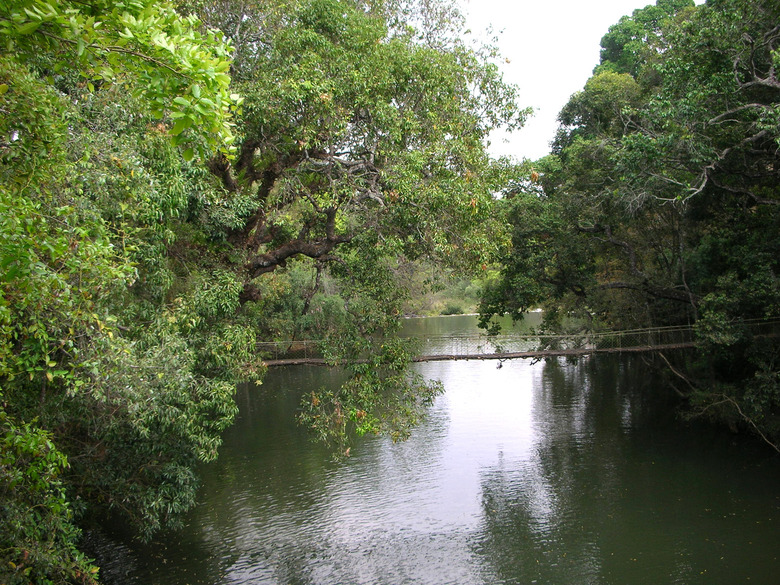How To Grow A Sandalwood Tree
Tip
Grow Indian sandalwood in U.S. Department of Agriculture plant hardiness zones 10 through 11.
There are many species of acacia, and each has its own climatic zone preferences. Most are hot-weather plants, such as black acacia, which thrives in USDA zones 10 through 12.
Trim back the host as necessary to keep it from interfering with the sandalwood growth. Be sure to sterilize the pruners before you begin by wiping them with a rag soaked in denatured alcohol.
Warning
A sandalwood tree only survives for about three years unless it is grown near nitrogen-fixing plants.
Sandalwood seedlings require shade to thrive, and young trees prefer diffused light to direct light.
Few tree species have paid a higher price for celebrity than the Indian sandalwood (Santalum album). This small evergreen tree grows wild in both Asia and Hawaii — but the world so lusted after the fragrant wood and oils of sandalwood trees that commercial interests wiped out most of the groves in both regions. Sandalwood is not a tree frequently grown in American backyards, and while general cultivation information is available, its scope is limited.
Step 1
Grow sandalwood in full sunlight in well-drained soil with a pH between 5.6 and 7.8. The tree accepts most soil types, including sandy soil and garden loam.
Step 2
Plant sandalwood near one of the over 300 species of trees and shrubs that fix nitrogen in the soil, such as acacia (Acacia spp.). Sandalwood is a hemi-parasite and connects underground with these host plants to obtain nitrogen, potassium and phosphorus. For best effect, the sandalwood and the host should be within 6 feet of one another.
Step 3
Space a sandalwood tree at least 8 feet from trees or structures other than host plants. Locate your tree where it will have sufficient room to rise to some 30 feet tall over time.
Step 4
Water your sandalwood tree to the extent required to keep the soil moist but not wet. Adjust irrigation depending on the rainfall in your area. Sandalwoods tolerate some drought, but in time it can kill them, as does waterlogged soil.
Step 5
Do not fertilize the sandalwood. Fertilization attempts to date have proved detrimental to sandalwood groves.
References
- Floridata: Hawaiian Sandalwood
- World Agroforestry: Santalum Album
- Agroforestry: Sandalwood
- Florabank: Santalum Spicatum
- Zip Code Zoo: Santalum Album
- Zip Code Zoo: Santalum Spp.
- University of California Integrated Pest Management: Acacia
- SelecTree: Blackwood Acacia
- U.S. Forest Service: Status and Cultivation of Sandalwood in India
